 Blizzard’s Hearthstone: Heroes of Warcraft (Free) is shaping up to be one of the biggest games ever, as it was already huge on the Mac and PC, but seems to be absolutely blowing up on the iPad. We’re witnessing an interesting phenomenon, however, in people not really understanding the game largely because of design decisions surrounding the in-game social aspects. It’s a perfect storm blended between the whole “Oh hey, new Blizzard game, I’ve got to play it" thing and the fact that the only way you can communicate with players in the game is through a series of significantly limited emotes.
Blizzard’s Hearthstone: Heroes of Warcraft (Free) is shaping up to be one of the biggest games ever, as it was already huge on the Mac and PC, but seems to be absolutely blowing up on the iPad. We’re witnessing an interesting phenomenon, however, in people not really understanding the game largely because of design decisions surrounding the in-game social aspects. It’s a perfect storm blended between the whole “Oh hey, new Blizzard game, I’ve got to play it" thing and the fact that the only way you can communicate with players in the game is through a series of significantly limited emotes.
To step back a bit, when playing a paper-based collectable card game, so much of the strategy and meta game that you learn comes from the social aspect of the game the whole experience hinges on. In Magic the Gathering, for instance, you’re sitting across the table from your opponent, talking through the whole game, and you typically talk about your games after the match too. If you’re a new player and get totally smoked out it’s exceedingly common for your opponent to help you with your deck. This could be as simple as them telling you to try including a particular card to totally breaking your deck down to offer suggestions on how to do better with it.
It often doesn’t take more than a few appearances at a Friday Night Magic event before ultra-newbie players who originally were running the craziest decks imaginable begin to get competitive, and it’s largely due to these weekly deck iteration and help from friendly veteran players. Comparatively, Hearthstone has nothing similar.
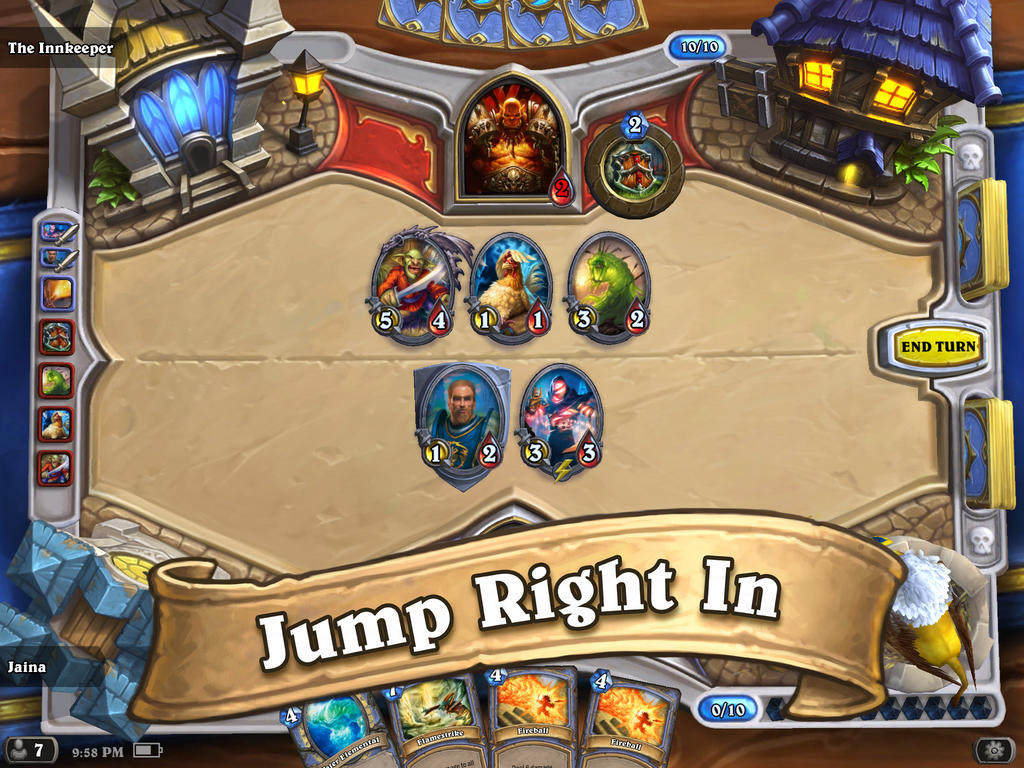
After a brief tutorial, you’re set off in to the wild to potentially be matched up with someone who has been playing way longer than you have. The transition between “Here’s how you attack" to losing on turn three to a Hunter combo exploding is jarring, and seems to be the source of loads of frustration if my twitter feed is any indication.
I’m by no means an expert Hearthstone player, but I have been playing collectable card games for nearly 2/3 of my life. I’ve found myself doing fairly decent in Hearthstone, largely because a lot of the strategies and techniques you need to employ to succeed are shared amongst almost all CCG’s, with minor differences that cover the various nuances that power each game. So, while this series of guides will focus specifically on Hearthstone, a lot of it applies to every CCG out there.
Let’s start with the absolute basics:
RTFC
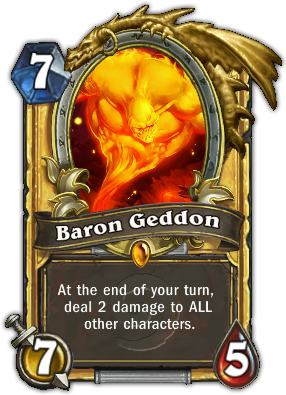 It sort of goes without saying, but the best foundation for doing well in a CCG is learning all of the cards in the format you’re playing. This is particularly easy in Hearthstone, as there’s less than 400 cards to learn in the entire game right now. Compared to the ~1,500 cards available in Magic’s standard format, ~8,000 available in Modern, and ~14,000 available in Legacy, Hearthstone is super easy to jump in to.
It sort of goes without saying, but the best foundation for doing well in a CCG is learning all of the cards in the format you’re playing. This is particularly easy in Hearthstone, as there’s less than 400 cards to learn in the entire game right now. Compared to the ~1,500 cards available in Magic’s standard format, ~8,000 available in Modern, and ~14,000 available in Legacy, Hearthstone is super easy to jump in to.
If you don’t mind a trial by fire approach, you can learn the cards by just paying attention to what your opponent is doing every turn in random games. Take time to read each card, and think about the following things:
- How could I use this card in my deck?
- What cards have good synergy with this card?
- What cards do I have in my hand or deck that can deal with this card?
Alternatively, you can peruse all the cards in game at your leisure either by going to your collection in game then tapping the “Crafting Mode" button at the top or by going to any of the many card databases online.
Predict and Respond
Many players new to CCG’s find themselves in this state of tunnel vision where their deck does what it does, and it just needs to do it before their opponent reduces their life to zero. While there certainly are deck types with the sole purpose of racing your opponent, in a general sense the reason it’s important to know all the cards it to anticipate what your opponent could do.
For instance, the Hearthstone tutorial teaches you how the card Polymorph works. It’s a card that you’ll only see in Mage decks, and for four mana it’ll reduce even the biggest minions down to a 1/1 sheep. It’s a strong enough card that you can expect almost every mage to be running one, if not two, in their deck.
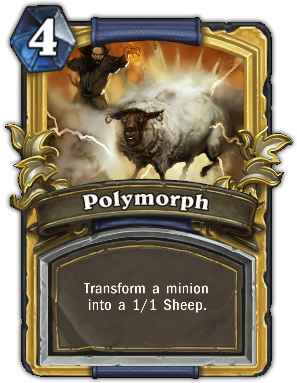 When playing against a Mage, you want to fish these cards out before playing your best minions. At any point after turn four (or turn three if they’ve got The Coin) consider yourself at risk for a Polymorph if your Mage opponent has cards in their hand. From here on out, one of the many mind games you’re playing is trying to figure out which of your minions you can play in order to fish out a Polymorph, as once you see two Polymorphs you’re basically home free to play whatever minions you want without worry. Yes, Mages have other card removal and direct damage to deal with your minions, but none are as effective at shutting down your best minions as Polymorph.
When playing against a Mage, you want to fish these cards out before playing your best minions. At any point after turn four (or turn three if they’ve got The Coin) consider yourself at risk for a Polymorph if your Mage opponent has cards in their hand. From here on out, one of the many mind games you’re playing is trying to figure out which of your minions you can play in order to fish out a Polymorph, as once you see two Polymorphs you’re basically home free to play whatever minions you want without worry. Yes, Mages have other card removal and direct damage to deal with your minions, but none are as effective at shutting down your best minions as Polymorph.
The most important part of playing any CCG is regardless of life totals or the current board state, you need to try to stay in the driver’s seat as much as possible. If you’re doing things to make your opponent respond in a certain predictable way, you’re always going to have an advantage.
Polymorph is a strong example, but every class has their own cards that can be a pain, and learning the cards that cause you problems is vital to doing better as each of those cards has an ideal scenario that your opponent is likely waiting for. The Hunter card Unleash the Hounds, for instance, hinges on you having minions out. You can typically control when your opponent plays this card by playing enough minions in a turn to create a board state where the number of hounds they unleash would be worthwhile.
So, hold back on minions until you draw a card that can clear the board like Holy Nova for Priests, Consecration for Paladins, and more. Your opponent will think they’re in the perfect position to play Unleash the Hounds, when in reality you’re setting them up to play it because you’ve already got an answer in your hand. Additionally, consider your opponent is likely trying to do the same thing to you.
Stop and Think
 I’m not sure if it’s people just trying to grind out daily quests quickly or what, but easily the #1 mistake I see players making is not playing their cards in order of maximum effectiveness. This similarly loops back in to the whole “RTFC" thing from earlier in that you really need to read, understand, and think about what your cards do.
I’m not sure if it’s people just trying to grind out daily quests quickly or what, but easily the #1 mistake I see players making is not playing their cards in order of maximum effectiveness. This similarly loops back in to the whole “RTFC" thing from earlier in that you really need to read, understand, and think about what your cards do.
Cards in Hearthstone have two main effects you need to consider: Constant effects which happens every time a condition is met, and Battle Cry effects which only happen once when the minion hits the battlefield. Cards like Starving Buzzard have an effect which is always online, while Defender of Argus has an effect which only buffs minions already in play.
So, for example, if you’ve got more beasts you plan on playing on the same turn as Starving Buzzard, you always want Starving Buzzard out first. Otherwise, you’re giving up free card draw and there’s no reason to do that as cards obviously are what power the game. Similarly, you’d want to play Defender of Argus last on your turn as you get the most out of that card if you can summon him in between two existing minions.
This seems like a basic tip, but I’ve lost count the number of games that either would’ve been way more difficult or I would have straight up lost had my opponent stopped to think about playing their minions in the best order for the most effectiveness.
Learn the Secrets
Unlike a lot of CCG’s, there’s no mid-turn interaction in Hearthstone aside from Secrets. If you’re not playing against a Hunter, Mage, Paladin (or Priest who has cards to copy your cards if you’re playing one of these classes) you’re essentially free to do whatever you want on your turn without worrying about anything happening until you pass turn.
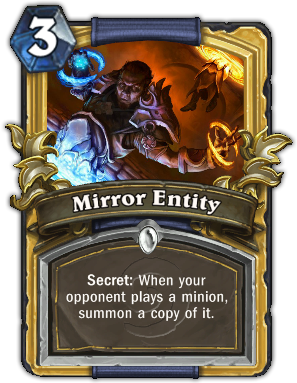 If you are playing against a Hunter, Mage, or Paladin, you’ll see just how annoying Secrets can be. Like everything else though, they can be reasonably easy to mitigate if you know what the cards do. Here is a full list of all the Secret cards in the game right now, and if you study any of the card library, make it those.
If you are playing against a Hunter, Mage, or Paladin, you’ll see just how annoying Secrets can be. Like everything else though, they can be reasonably easy to mitigate if you know what the cards do. Here is a full list of all the Secret cards in the game right now, and if you study any of the card library, make it those.
While it’s hard to tell exactly what Secret an opponent is going to play, it’s usually reasonable to assume your opponent isn’t just playing cards for the sake of playing cards and instead is trying to actively play something that’s going to help them out. For example, if it’s turn three and your Mage opponent doesn’t have any minions out and casts a secret, you can make a logical assumption that it’s probably Mirror Entity and he’s going to clone your next minion.
In that case, it’s really not a good idea to bust our some super huge minion as you want to use that to your advantage instead of also giving them a free one. It’s a way better idea to test the waters with a tiny minion you might still have in your hand so in the event Mirror Entity is the Secret they played, it’s a non-issue for you.
You can make similar assumptions with most Secret cards being played. Always assume your opponent is playing the Secret that’d be the most effective, and when it turns out they’re not, at least you didn’t find yourself over-extended by not trying to play around it.
Card Advantage is King
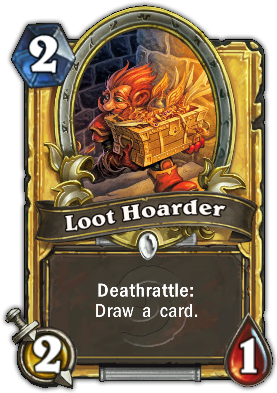 Being a card game and all, cards obviously do everything and are your main resource aside from your mana crystals. When tweaking your deck, you want to be looking for ways to get the biggest bang out of your proverbial card/mana buck. There’s a million examples but cards like Loot Hoarder and Novice Engineer are particularly good low cost cards because they not only allow you to potentially get in for a little bit of damage or even trade with a minion but they also refresh themselves with card draw. That’s super efficient for two mana.
Being a card game and all, cards obviously do everything and are your main resource aside from your mana crystals. When tweaking your deck, you want to be looking for ways to get the biggest bang out of your proverbial card/mana buck. There’s a million examples but cards like Loot Hoarder and Novice Engineer are particularly good low cost cards because they not only allow you to potentially get in for a little bit of damage or even trade with a minion but they also refresh themselves with card draw. That’s super efficient for two mana.
On the opposite side of the coin, you want to do everything you can to lure your opponent in to playing their cards inefficiently. Going back to the Secret example from before, if your opponent has Mirror Entity up and you play a card like Stonetusk Boar, you’re not only making them lose tempo of the previous turn where they did nothing, you’re also making them pay three mana for a card that’s worth one mana.
Similarly, cards that do area effect damage are super strong for card advantage as it’s entirely possible with a good Arcade Explosion (or similar card) to end up in you spending one card to potentially clear an entire battlefield of minions.
Try to Play as Many Turns Ahead as You Can
 All these tips sort of go together to allow you to treat Hearthstone closer to how chess players try to look forward multiple turns in the game to figure out where pieces are going to be. The key is trying to be as observant as possible, and look at a Hearthstone match as a whole rather than focusing on original turns. At the start of the game, don’t keep cards that don’t play a part in a larger plan of how you will roll out through the start of the game.
All these tips sort of go together to allow you to treat Hearthstone closer to how chess players try to look forward multiple turns in the game to figure out where pieces are going to be. The key is trying to be as observant as possible, and look at a Hearthstone match as a whole rather than focusing on original turns. At the start of the game, don’t keep cards that don’t play a part in a larger plan of how you will roll out through the start of the game.
Just looking at the mana cost of cards, something like the Priest’s Shadow Word: Death might seem like a strong keep at the beginning of the game, but something to consider is that even though it’s got a cost of three, it’s effectively a dead card until turn four. There’s always exceptions, of course, but you usually just don’t see minions with 5 or higher attack at the start of the game.
Throw any cards back in your opening hand that don’t fit in to an immediate “Here’s what I’m going to do on the first three turns" plan. I know how appealing it is to keep your one sick legendary card you opened, but consider by the time you play some six mana legendary, without any additional card draw, you’ll have seen 1/3 of your deck and there’s a decent chance you’ll get it back again when you can actually use it.
There’s So Much More
The hard part of writing a Hearthstone guide starting from the beginning is how much there is to the game. The goal of this guide was to cover the super high level basics that players can start doing now regardless of what deck they’re playing to see some improvement. Next time around we’ll examine some basic decks, then get in to building your own deck.
I really like Hearthstone, our community seems to really like Hearthstone, and we’re just never going to run out of things to write about this game. Just remember, stick with it, treat every defeat as a learning experience, and you’ll always improve.